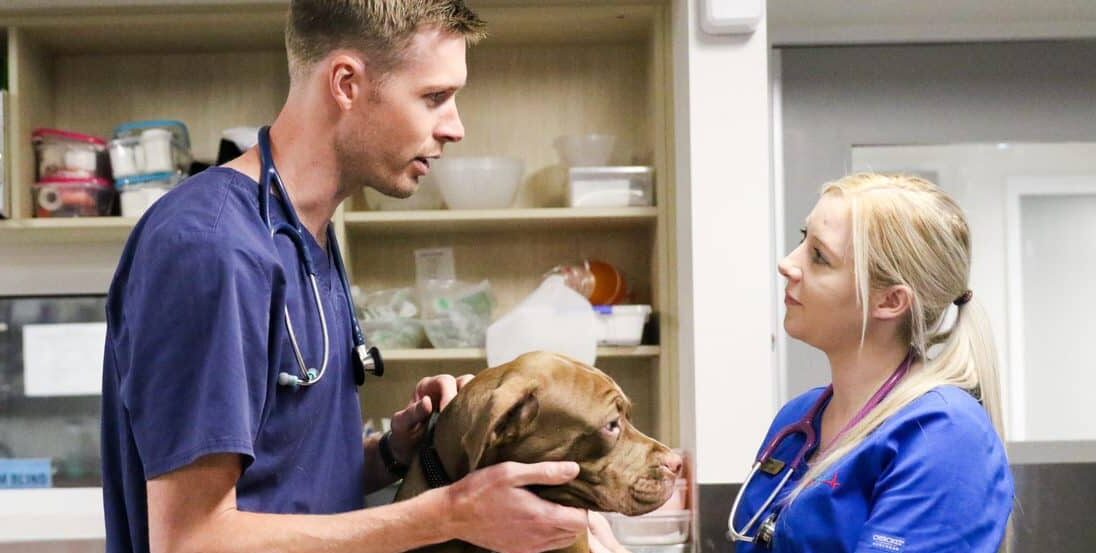What is vulnerability?
In our previous article we spoke about the Importance of Self-Awareness for Veterinary Professionals – this time it’s all about vulnerability in the veterinary profession. Let’s begin with a couple of quotes from Brené Brown, an American professor, well-known for her work on shame, vulnerability and leadership:
“Vulnerability is having the courage to show up when we have no control over the outcome. Vulnerability is not a weakness; it’s our greatest measure of courage”
And… “We need more people who are willing to demonstrate what it looks like to risk and endure failure, disappointment, and regret – people willing to feel their own hurt instead of working it out on other people, people willing to own their stories, live their values, and keep showing up.”
Vulnerability is often perceived as a weakness, especially in the veterinary profession where many of us struggle with perfectionism. We attach our self-worth to our achievements, so sharing a part of us that doesn’t fit into our self-perception can be difficult if we see it as failure.

Yet it is important to cultivate a psychologically safe team culture that encourages staff to open up. Sharing vulnerability drives connection between people because they are showing their authentic selves. It helps to encourage others to open up when empathy is displayed in the workplace.
People who are prepared to be vulnerable feel less isolated as a result because they discover they are not the only ones feeling this way. The realisation that others may not feel competent in all areas of their work can help to reduce symptoms of Imposter Syndrome.
Discussing Vulnerability in the Veterinary Profession
Sharing our vulnerability isn’t about being comfortable, it’s difficult and daunting because it involves uncertainty, risk, and emotional exposure. The inability to manage emotional risk limits our appreciation of life experiences that involve uncertainty. It leads to procrastination and loss of opportunity. It limits our learning and growth. It inhibits our relationships.
An interesting observation is that vulnerability is often something we look for in others, yet we may struggle to be vulnerable ourselves. It can be seen as courage and daring in others because they are opening up about their fears. Yet we may see it as a weakness in ourselves because we feel ashamed and worried about what other people might think.

Another important consideration when discussing vulnerability in the workplace is recognising that it is also essential to retain appropriate boundaries around what is being shared, why it is being shared, and with whom. Trust is imperative. We can be vulnerable without exposing ourselves to everybody.
Why is vulnerability in the workplace important?
Creating a psychologically safe workplace is critical to ensure staff feel comfortable to reveal their authentic selves. They need to feel safe to speak up, ask questions and share their concerns without fear of being ignored, judged, or spoken about behind their backs. If vulnerability isn’t encouraged – or perhaps is even actively discouraged – staff may not ask essential questions, admit to mistakes, or raise any concerns they have for fear of rejection or being considered incompetent.
The workplace risks stagnation because employees lose their motivation for learning and development. They lose trust. The resultant deteriorating workplace culture leads to increased negative stress, higher employee attrition rates and lowered productivity.
What does showing our vulnerability involve?
Showing our vulnerability means revealing our true selves, showing where we lack confidence, or perhaps voicing our deepest fears. It means being open and truthful, and prepared to share this information with others. We need to feel safe so that we can:
- Be willing to share our feelings
- Express ourselves honestly and respectfully
- Ask for what we need
- Be clear about what we want
- Slow down, stay present
It’s important that we reciprocate. We need to accept vulnerability in others and listen patiently without judgement. We need to be mindful of others who may have differing perceptions, learning styles or ways of communicating.

All forms of diversity such as cultural, LGBTQIA+ and neurodiversity (Autism, ADHD) are important considerations in order for people to be authentic and feel a sense of belonging. Neurodivergent staff members often have added difficulty navigating the complexities of communication and may not pick up on the nuances of conversation. As a result, they may not feel part of the team – or even totally excluded – especially if fellow team members lack awareness and fail to be inclusive.
So how do we support vulnerability in the veterinary workplace?
It’s time for another quote:
“Strong leaders are confident enough to let others see them without all the answers, which, in turn, empowers employees to find their own answers and show vulnerability themselves.” – B Winterbottom, HR consultant and CEO of The Business of HR
Confident leaders who can show their vulnerability effectively help to create innovative and collaborative workplace cultures. This is because vulnerability is fundamental to establishing meaningful communication, which is an essential component of team cohesion and growth.
By observing leaders doing the same, employees are more likely to trust they can admit errors without judgement and contribute their ideas for problem-solving and improvement. In addition, leaders who share their vulnerability effectively with appropriate boundaries set an example for their teams.
To embrace vulnerability in the veterinary profession, it is important to encourage everyone to:
- Keep communicating! We need to be aware of what is going on around us and ask questions if we notice an employee who seems worried or stressed.
- Be prepared to have the tough conversations even if it seems uncomfortable.
- Be inclusive.
- Actively discourage gossiping.
- Let go of ego! Recognise everyone has something to offer and we can all learn from each other.
- Be authentic.
- Invite feedback from others.
In Summary
Veterinary workplaces can be challenging, especially when team members do not feel psychologically safe, as we’ve touched on in our previous article on The Veterinary Mental Health Challenge. Being able to share our vulnerability and accept vulnerability in others is essential in creating a healthy workplace culture where open communication and trust building are a priority.
Team leaders and practice managers must be prepared to be vulnerable themselves so that they set an example for their colleagues by promoting authenticity. Employees that feel able to show their true selves at work are far more likely to be content in their roles and increase their productivity. Awareness of diversity in all areas is imperative.
The resulting increased employee retention rate promotes team cohesion, learning and development, continuity for clients and improved business profitability.

Dr Kathryn James BVSc (Hons), Dip Couns, Cert IV TAE and Dr Deborah Webb BVetMed, MANZCVSC, Dip Couns
Veterinary Vitality | Experienced Veterinarians | Counsellors
Dr Kathryn James and Dr Deborah Webb are experienced veterinarians and qualified, registered counsellors, who have a deep understanding of the joys and challenges of being in the veterinary workforce. They established Veterinary Vitality for the veterinary community to access counselling and wellbeing services provided by people who have this level of insight into the profession.
Their focus is to help others in the industry enjoy meaningful, rewarding careers and personal lives without succumbing to the struggles that are becoming increasingly common in the profession. They take a holistic approach, using evidence-based strategies such as talk-therapy, Acceptance and Commitment Therapy (ACT), Cognitive Behavioural Therapy (CBT), Solution-Focussed Therapy (SFT) and Positive Psychology. The counselling and wellbeing sessions are a confidential, safe space in which anything can be discussed.




